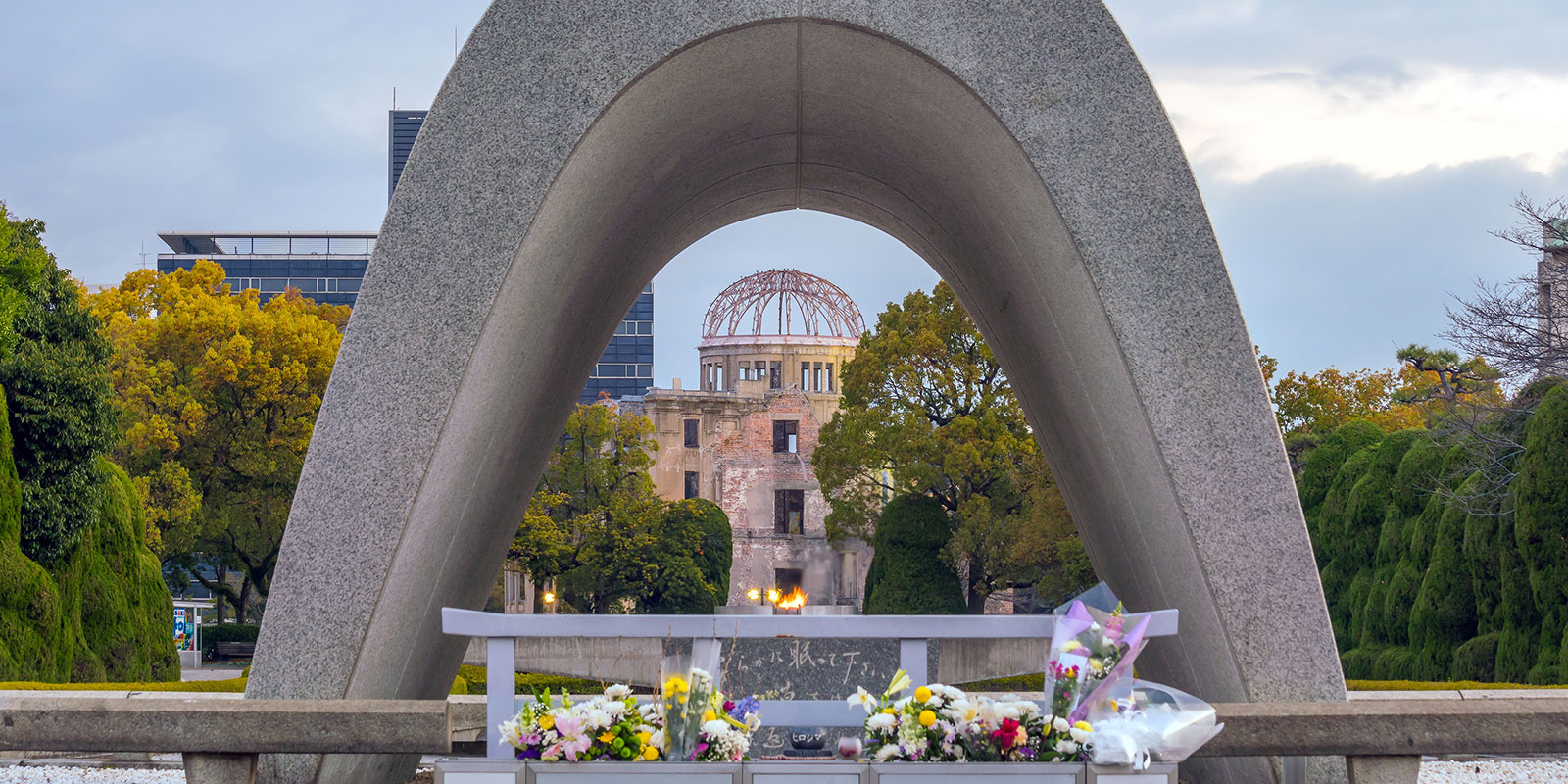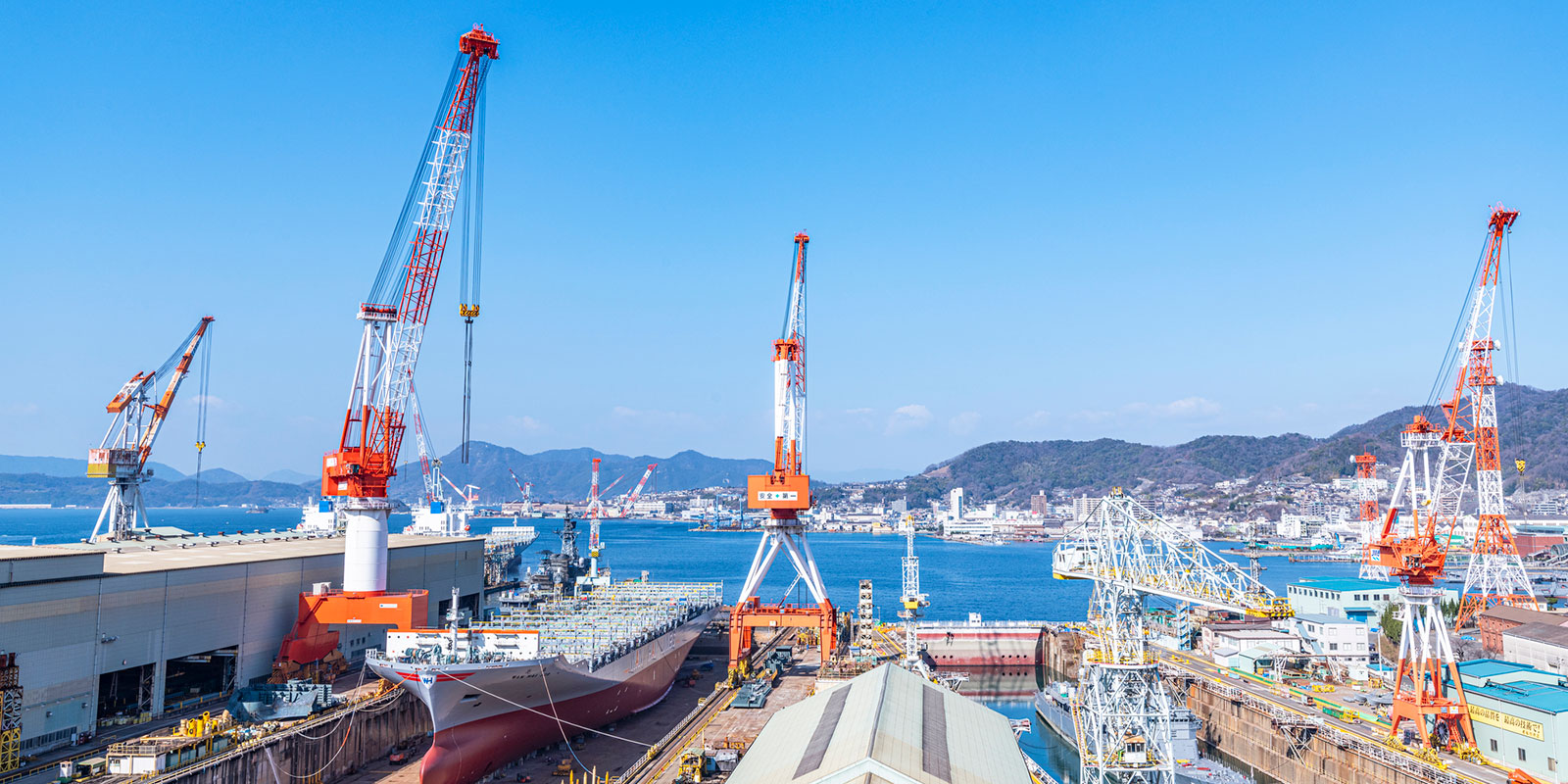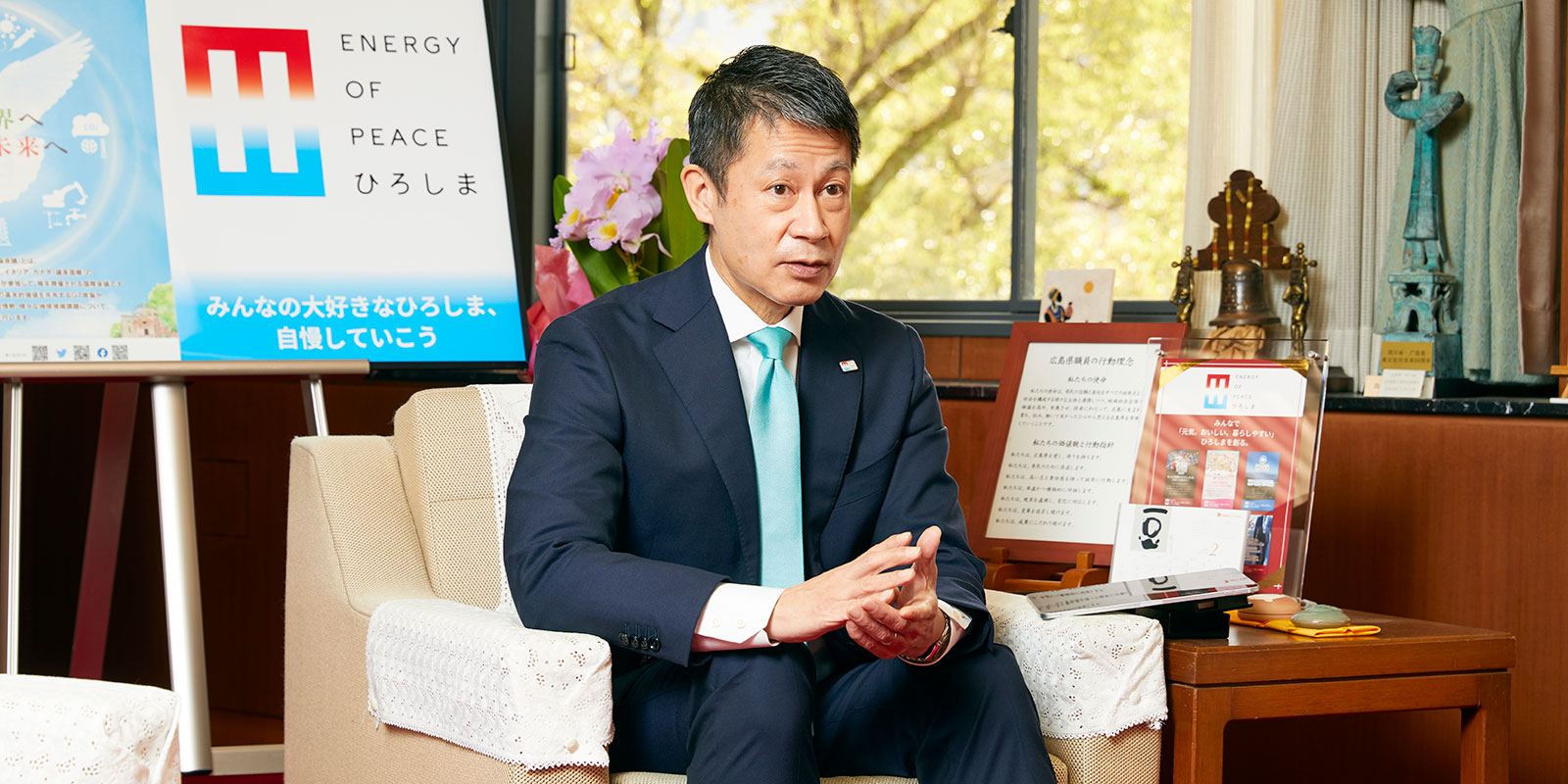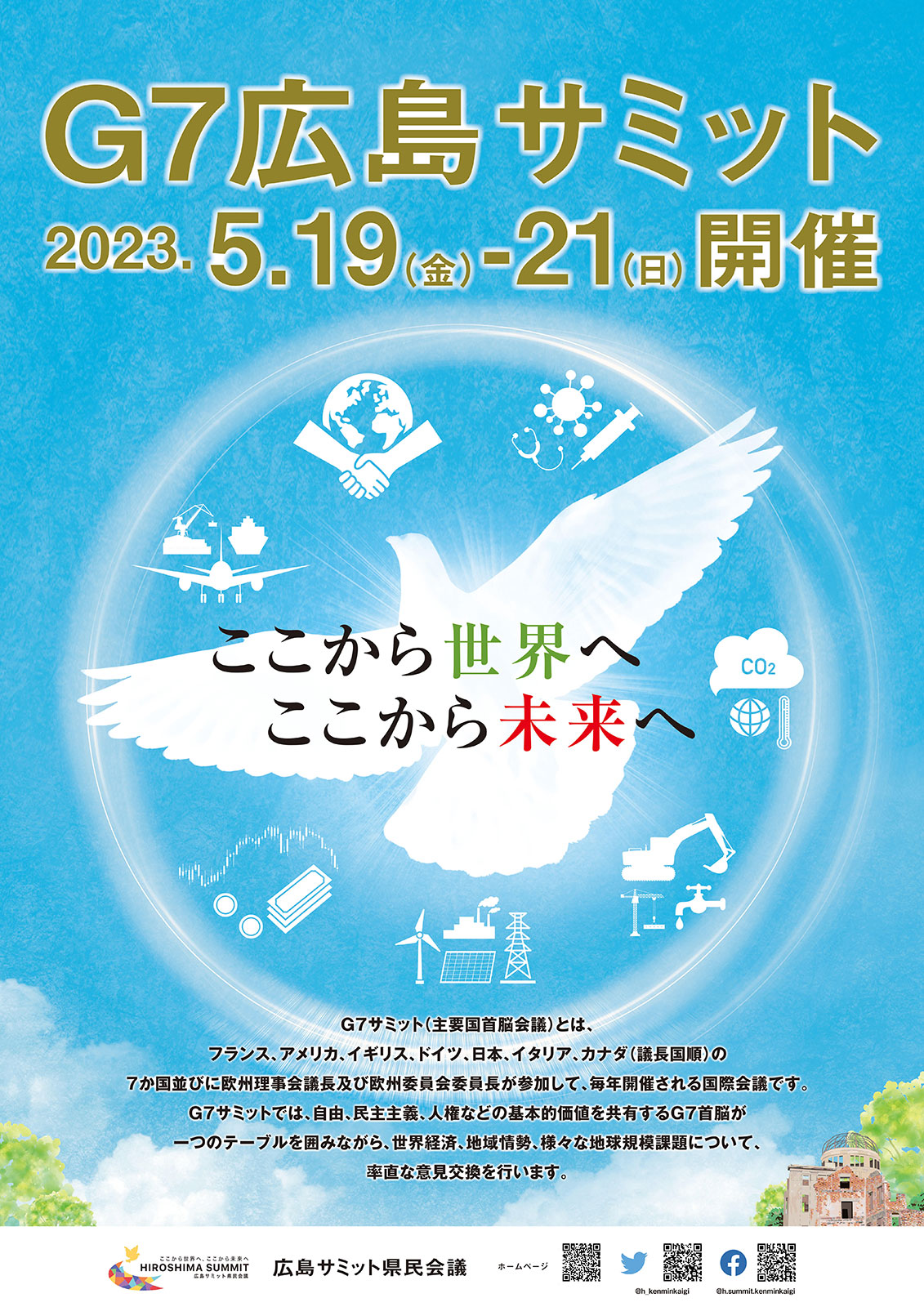A welcome change
In May Hiroshima Prefectural Governor Hidehiko Yuzaki will welcome some of the world’s most influential people to the area for the G7 summit. He talks to Akiko Toya about how Hiroshima is preparing for the conference and how he hopes the prefecture will leave a lasting impression on the attendees
The G7 Hiroshima Summit will be held in May. What is the significance of holding the summit in Hiroshima?
This year’s summit is being held under unusual circumstances. Japan will be hosting the G7 leaders in the midst of Russia’s invasion of Ukraine and a renewed threat of nuclear weapons being used. In such a situation it will be very significant to send a strong message of our commitment to peace. Hiroshima has two symbolic qualities. One is that we have experienced the use of nuclear weapons and how inhumane it is—it threatens the survival of humanity itself. At the same time, we can demonstrate that with a foundation of peace, there is an opportunity for prosperity, such as that Hiroshima enjoys today. Having the theme of the summit and the message [of the importance of peace] conveyed by Hiroshima as host align so perfectly is a rare thing, and in that sense I think it’s deeply significant that the summit will be held in Hiroshima, from where a strong message of peace can be communicated.
It has been a year since Russia began its invasion of Ukraine. As a representative of Hiroshima, how would you like to convey the preciousness of peace to the world?
It comes down to the tragedy of war and the reality of the use of nuclear weapons. Russia’s nuclear threats are a real, present-day problem. It is not a matter of abstract understanding about how many kilometers of land would be damaged [in the case of nuclear war], what the radiation would be like, or how many tons of force the explosion would have, but rather, it is more important for people to come here to Hiroshima and actually see what happens [when a nuclear weapon is used]. If possible, I would like the world leaders to visit the Cenotaph [which commemorates the victims of the atomic bomb] and go to the [Hiroshima Peace Memorial] museum to see the reality of nuclear weapons. Through visiting the museum and listening to the stories of hibakusha [survivors], there are things that can be physically felt, and I am sure that were the leaders of the world to have this experience, they would return home with a different view on nuclear weapons and how to build a foundation of peace.
 Hiroshima Peace Memorial Park | F11photo/Dreamstime
Hiroshima Peace Memorial Park | F11photo/Dreamstime
We want people to feel strongly that nuclear weapons are something that must be eliminated
What is your view on the importance of the summit?
First, there is the issue of nuclear weapons. We want people to feel strongly that they are something that must be eliminated for the sake of humanity. In addition to this, the sustainability of the planet is a major issue. These issues are connected: global warming and the pandemic are threats to sustainability, as are nuclear weapons. The problem of nuclear weapons gives rise to a paradox of simultaneous instability and stability, in which countries with nuclear weapons cannot wage full-scale war against each other, but can invade countries that do not have them. The impact of such wars is then widespread, such as we’re seeing with the inability to export wheat from Ukraine, which is causing hunger and social unrest far away. Everything is connected. I think that these connections and issues are something that can be discussed at the G7 and that solutions to them can be formulated. In the end, this is what can lead to peace. I would like world leaders to send the message that prosperity is possible only if there is a foundation of peace.
What are the current issues and policies of Hiroshima Prefecture with regard to carbon neutrality?
Hiroshima Prefecture is in a very difficult position. We have a major concentration of steel, automobile, and chemical industries, all of which emit large amounts of carbon dioxide. Our percentage of emissions from industry is 74 percent, while the national average is 47 percent. In that sense, if we just reduce emissions, it will be very costly, so I think it is important to find a way to translate measures into new investment in new industries. The companies here, especially the large ones in industries such as steel, automobiles, chemicals, and shipbuilding, are making solid efforts. My administration would also like to support and help small and medium-sized enterprises as well as households to promote energy conservation as a prefecture-wide effort, which can open up new opportunities for growth. The prefectural government is also working to promote the use of renewable energy sources, and we have a goal of reducing our CO2 emissions by 55 percent [from 2013 levels by 2030]. It’s possible to make this an opportunity for growth.
 Shipbuilding in Kure, Hiroshima Prefecture | PIXSTAR/PIXTA
Shipbuilding in Kure, Hiroshima Prefecture | PIXSTAR/PIXTA
What sort of decarbonization measures are being taken by Hiroshima Prefecture?
We have three focus areas: energy conservation, renewable energy, and carbon recycling and a carbon-circular economy. We’re aiming for a 39.4 percent reduction from 2013 levels by fiscal 2030. We facilitate investment in energy conservation by small and medium-sized businesses, and encourage households to invest in energy conservation too. In terms of the carbon-circular economy, the problem is the emission of carbon dioxide into the environment. People say that coal is bad or oil is bad, but what matters is how much CO2 is emitted. It’s important to convert CO2 into valuable resources and let them circulate—without releasing CO2 into the atmosphere. Human beings are mostly made of carbon. If we truly “decarbonize,” we will all be gone, but I believe that technologies that allow for CO2 to circulate without emissions or discharges, often referred to as CCUs [carbon capture and utilization], which capture emissions from the source, will be a great growth opportunity. Right now, the national government is developing a research facility for this in the [Hiroshima Prefecture] town of Osaki-Kamijima. We have also created a Carbon-Circular Economy Council (CHANCE) in cooperation with universities to boost new technologies. We are working on this in the hope that it will become a new industry for the prefecture.
You are one of the expert members on the government’s Council for the Realization of the Vision for a Digital Garden City Nation. What is your view on the potential of this vision?
A major challenge facing Japan, and Hiroshima Prefecture, today is the continuing decline in our population, not only in terms of natural decline [more deaths than births] but also social decline [more residents moving away than new residents moving in]. The population is increasingly concentrated in the Tokyo area, and I believe that if this continues, the country as a whole will lose its vitality. I believe that digital technology will be effective in overcoming this problem. I think that creating new business models through innovation is an important initiative. As the pandemic is coming to an end, some parts of the digital transformation of society that were advancing have started to reverse, but what can’t be reversed is the experience that digital allows us to leap over the constraints of time and space to a great extent. This should be pushed forward, allowing for people to work productively wherever they are. I believe that the goal of the Digital Garden City vision is to increase productivity and I have very high expectations.
 Governor Hidehiko Yuzaki | Kisa Toyoshima
Governor Hidehiko Yuzaki | Kisa Toyoshima
“I believe that creating new business models through innovation is an important initiative”
How is digital technology transforming Hiroshima?
We are aiming to incorporate aspects of AI and big data to strengthen our core industries. In order to support the digitalization of manufacturing and to accumulate digital capabilities, we have a project called the Hiroshima Sandbox. It’s an opportunity for experimenting with digital [technology] and robotics, just like playing in a sandbox. In addition, in 2019 we established a Digital Transformation (DX) Promotion Headquarters, which works on introducing digital [technology] into daily life. Furthermore, in 2020 we established a new vision for Hiroshima Prefecture, which included promoting digital as one of the key aspects of all our operations. In Hiroshima’s mountainous areas, we are examining what smart agriculture can do to add value. For example, there is the picking of grapes, including thinning the grape trees in order to grow larger grapes, but this is not easy for inexperienced workers to do. So we have a project in which workers wear smart glasses that help them identify which grapes to pick, thereby improving productivity.
You have said you want to promote “Hiroshima’s unique hospitality” during the summit. What do you have in mind specifically, and what are some of the aspects that make Hiroshima an attractive destination?
I believe that hospitality is ultimately about making people feel glad that they have visited. You need to be very resourceful to accomplish that—to welcome visitors in a way that puts their preferences and hopes first. It’s something that we need to get all residents of the prefecture on board with. We want people to understand the significance of the summit in Hiroshima, and with that, we would like to create momentum for the people of the prefecture to welcome visitors. We have a participatory project called Smile for Peace, which is a mosaic art project with pictures of the smiling faces of prefectural residents along with messages from them. By increasing engagement, we would like to heighten people’s feeling of participating in something where important things are being discussed. There are many things that make Hiroshima attractive, be it culture, technology, or the nature and landscape. We have a diverse climate, with lemons produced in the southern parts [of the prefecture] and apples in the north, so our food is rich in variety. That includes fish nourished by the currents of the Seto Inland Sea and Hiba beef, one of the original wagyu breeds. Hiroshima inevitably gets mentions for the Atomic Bomb Dome and the World Heritage Site of Miyajima, but I hope people will also look beyond those and at the many other wonderful and valuable attractions we have.
 Courtesy of Hiroshima Prefecture
Courtesy of Hiroshima Prefecture